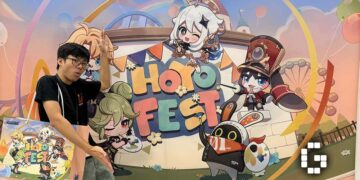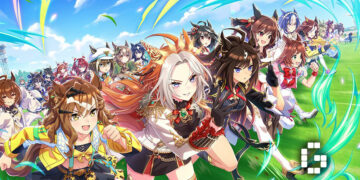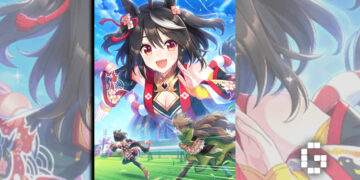With World of Warcraft: Dragonflight looming over the horizon, there’s still more to learn about the actual craft of the Dragon Isles. Tina Wang, Associate Art Director, and Maria Hamilton, Lead Quest Designer, are in the hot seats today, here to shed more light around the visual design and the questing experience respectively.
Interview has been edited for clarity.
MAKING LANDFALL
Considering the fact you’re meant to fly around these spaces, was it a challenge to design these areas players would be able to get up close and personal with? On that note, how does this ‘freedom’ affect quest design?
TINA WANG: When making Dragonflight, we knew we wanted to build flying into that starting experience, because it’s part of the Dragon Isles and it made so much sense. There were definitely a number of things we kept in mind as we were building this continent, such as, the continent as a whole is a ‘spiral’ where you go upwards as you progress through each zone. You feel like you’re ascending and finally, at max level, you’re able to set your hearthstone in the player hub of Valdrakken and be able to glide to the variety of spaces to end-game activities and exploration.
The first zone is at ground level, right at the ocean level when you show up with your ship. In that one, you’ll see these really tall pillars, and we thought it’d be fun and interesting for players to be able to come back and explore these places. Dragonriding itself has really allowed us to create a space where the player is flying and really engaging and immersing themselves with the land as they travel.

MARIA HAMILTON: On designing for dragonriding specifically, because we knew we were gonna have players doing this, we intentionally arranged our quest flow so that there would be great opportunities for players to sort of end up high up somewhere, and have that exciting, fun swoop down to another space. It really had to do a lot with how we chose to flow through zones and where we put the quest givers, and it was really fun to find those moments to give players the speed, momentum, and ability to get to a location in their own way. I think it added a lot to the questing.
TINA WANG: We also have special activities. When you get to max level, there are major factions you can adventure with and gain renown – like a reputation system – and one of them is the Dragonscale expedition where they’re all about discovery and exploration. One of their activities is placing flags on high peaks, discovering chests and secrets there. We really wanted to let players take advantage of the system of getting to high places and then enjoying diving and going somewhere cool.
As a follow up, could you elaborate on how closely your respective departments work together in that respect?
MARIA HAMILTON: Essentially, our artists get inspiration and think about interesting, cool concepts, draw a lot of exciting areas, and we start having that back and forth conversation. Narrative gets involved, talking about the story in might be in the space, and we start thinking about how we want the player to travel through the area, what makes sense for them to do. Part of our theme was about exploration and discovery, so how can we find all those nooks and crannies, and help the player know it’s worth exploring those places?

On that note, is there a particular design philosophy for quests e.g. pacing, how many parts to it, etc.?
MARIA HAMILTON: For an expansion like this, we have a main story arc that takes you through all our zones, telling you the overarching story, and all the important characters. Within each zone, we have the local stories, intended to flesh out the stories of the place, the people and their culture, what they care about, how the environment affects how they live, and Tina’s team gives us the props.
For example, for the Tuskarr: we never had a chance to see them in their homeland, so now we get to see how they do with things like their fishing, hunting, and so forth.
While I understand you won’t be able to talk much about the lore itself, does a lore heavy quest somehow change quest design?
MARIA HAMILTON: I don’t think it changes the design. We have a philosophy in general that you see in a lot of World of Warcraft quests: keeping things relatively simple with high points, maybe more complicated mechanics, and a certain pacing where players can have a little bit of time to relax and consider what they have learnt then build up to another big moment. We use amazing areas in the world, cinematics and cutscene moments to emphasize some of those points as well.

There is a definite pace to how we lay out a quest line and how we decide to flow players through the space, because we want the gameplay to tell the story. Gameplay first, so it has to be appropriate to the story were telling and we have a great area to do it in. As you can imagine, some spaces are not good for certain kinds of gameplay; you need enough creatures for a kill quest, space for a wave attack, things like that.
We work very closely with our level designers and world builders as we choose what were gonna do in those spaces and ask them to help us make them feel good for the gameplay we want players to experience with the story.
SPACE CREATION
I feel that’s a good hop off point with regards to the Dragon Isles’ biomes; with this large variety, was there a particular challenge for the art team to make them ‘flow’ naturally into each other?
TINA WANG: That’s definitely one of the things we tried to do more, say, I think starting around Legion. We’re creating this entire landmass, terrain, mountains, to make them part of a natural landscape.
We also talked about how the Dragon Isles has a lot of geothermic energy because that’s where the protodrakes – where in World of Warcraft lore, they are of the elements – originated from, so you’ll see the volcanoes in the Waking Shores, lava chasms, the Ohn’ahran Plains having these geysers, overall showing that this land is alive with that elemental energy.

As I understand it, dragonriding is currently limited to the Dragon Isles since that space has been specifically designed for that feature in mind. How has that changed the design of spaces? I imagine it would be really hard to revisit older locations with this in mind.
TINA WANG: I think dragonriding is a bonus to the way we think about players interacting with the space. The burning crusade version of flying was very much like swimming in the air, but with dragonriding, you’re truly interacting with your environment. You can’t just push a direction and go there; you really have to look around, gain some elevation to go farther.
There’s also components we’ve added to the world to help players get higher, like these air vents or flows, so that they can use them as a launching point.
With that in mind, I want to ask how you can make sure people don’t sequence break, or just break things in general, when they’re trying to explore with dragonriding?
MARIA HAMILTON: We are careful, or at least, try to be very careful to make sure you can’t break the quest by jumping ahead. We make sure something’s not gonna happen until you take those extra steps.
It’s similar to some end game campaign design where we know players are eventually gonna have flying, so we have to keep in mind we can’t make it possible to just avoid all the obstacles. We were able to apply those same dragons to dragonriding, but yeah, it’s hard to know exactly which direction players are coming from.
All in all I think it’s something we already do.
Taking that into consideration, has quest design somehow changed much over the game’s long lifetime?
MARIA HAMILTON: There have been changes as technology, tolls and the team improve to have the ability to do more and different kinds of activities. In Dragonflight, we’ve done a fair number of public events where we try to pull players to do something together in a more technically stable way. From the crashes in the really early days, we’ve since made improvements on that.
When I was a player, I remember when the ability to ride flying creatures and drop bombs on enemies was a new thing. We’ve moved away from the long escort quests that everyone “loved” so much and have tried to make sure we’re always thinking ahead.
Back then, the other faction could kill your escort. Nowadays, we make it so that you have the opportunity to travel with a centaur caravan, but you can run ahead to meet them at their next stop and they’ll be there for you.

TINA WANG: As an aside, I really like that there’s a distinction between the main and side quests for those who really want to focus on the story, get to max level and get to the dungeons and raiding while there’s so many of the local stories to discover just everywhere.
I noticed the B-roll included previews of these ‘sick’ zones; thinking about that alongside the reveal cinematic, how was it crafting a place that is ‘timeless’ from being in stasis, yet irrevocably changed?
TINA WANG: It was really fun to create something like the Dragon Isles. Even though the land itself has been shrouded and hidden away, the land itself is still rich. It was really cool to create these environments, the beauty of these terrestrial lands mixed with the fantastical locations telling the story of the different dragonflights and their seats of power when they made back in their height, and now they’re coming back to discover these bases.
See the Ruby Life Pool, Waking Shores, Neltharus, the dungeon and the space in that volcanic area; the seat of power for the black dragonflight. Then we have the bronze temple in Thaldraszus, with the sands of time. We took a lot of inspiration from what we knew of World of Warcraft lore, glimpses of previous art, and bring them into today’s level of fidelity and push them even further than before.

There was also great opportunities to take cultures we didn’t see much of before. Take the centaurs whose zone in Vanilla was very desolate. Now, we have this rich culture that still ties in to what they are: nomadic, hunters, that kind of thing.
There’s also the elements for the various creatures in the dragon isles. For instance, the gnolls: there’s a twist in which there’s decay magic affecting them. There’s so many fun opportunities to push themes related to the unique story of the dragon isles.
MOVING FORWARD
I always ask about what you’ve learnt from the feedback you get; I understand how art can be subjective, so how do you go about revising those visuals? As for the questing, is it more objective, or is there also a degree of subjectivity to it?
MARIA HAMILTON: I do think there’s a degree of subjectivity to questing, but sometimes, some things are definitely just not right. There are things to be fixed, we do a lot of internal testing and feedback, and that’s the first point when a quest designer pitched their idea. They do more stages, slowly building up and iterate on it as people play and provide feedback until eventually the whole team gets to try it.
There’s also subjective feedback where some people just like some things more than others. Eventually we go out to our Public Test Realm and adjust again to player feedback. Really, the process of building quests is all about iterating and finding the best possible quest out of the initial pitch. Everyone doesn’t like everything but that’s okay, because we have so many different types that you can play something you enjoy more. We just try to provide more opportunities to improve so that people can have a good time and we’re really keen on hearing back.

TINA WANG: On the art side, similar to Maria, one of our goals is to create a variety of experiences for the player. When we build zones, you’ll notice that we put in a lot of effort to make them feel different and unique through the palette, and archetype of the zone, to give players that range of experience.
We definitely do get a lot of feedback from players about things like characters, armour, and we’ve looked at them and responded to in the past and made adjustments. Even though it’s not right away, some of that higher level feedback we consider for future work, knowing what things are important for players, what they’re interested in, so we absolutely do listen as they make a big impact.
Let’s close out with what you’re most excited for in Dragonflight.
MARIA HAMILTON: I’m really excited to see players get started on making their dracthyr characters, go through the amazing customization and make the one that represents them, with the perfect look they’re going for. I love a lot of what we’ve done with dracthyr tourists wandering around Stormwind and Orgrimmar: we had a lot of fun building that, giving a feeling appropriate to what would happen if you’ve been asleep for 10,000 years and walking through the city.
I’m also looking forward to people having fun with crafting. We’ve totally reworked the profession system, and I think the opportunity to craft for my guild mates, friends, fill work orders, just opens up a whole lot of possibility.

TINA WANG: On the art side, I’m just excited for players to discover the land of the Dragon Isles. It’s this enormous wild land that’s the biggest expansion continent we’ve ever created: a true wilderness worthy of dragons with a huge variety of cultures we’ve put so much love and care into.
On a personal level, as a player, I really enjoy PVP. This time around I’m really happy about the gear because it’s very easy to gear up and get to the gear item level; it’s consistent across the board, like once you get the item, it’s not like you need to upgrade it as your rating increases so it will be very easy to get variety. That’s something for Dragonflight overall, that you can play the way you want to play, and I love that.
It’s undeniable that for such a mature MMORPG, World of Warcraft is made up of so many moving parts. Still, that doesn’t mean that it never has room to change, and Dragonflight certainly promises a wide range of things while still keeping things familiar.
Much thanks to Tina Wang and Maria Hamilton for taking the time to answer my questions! For developers and players alike, we’ll see you in the Dragon Isles.
Do check out our other interviews regarding Dragonflight:
- “Returning to core Azeroth in modern times” with Patrick Dawson and Laura Sardinha
- “On starting a new adventure” with Ion Hazzikostas
- “Accessibility of class fantasy” with Graham Berger and Jake Miller
- “Class balance and the user interface” with Brian Holinka and Crash Reed


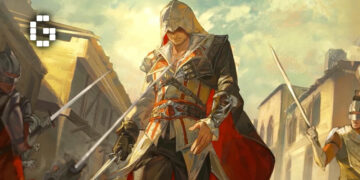








![[EXCLUSIVE] Creative Masterminds from Gearbox Software Reveal What Makes Borderlands 4 Worth the Wait](https://cdn.gamerbraves.com/2025/07/Borderlands-4-at-Bilibili-World-2025_Interview_FI-360x180.jpg)


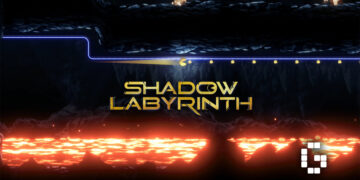

![[ASIA EXCLUSIVE] Bringing Back a Classic: Inside the Making of FINAL FANTASY TACTICS – The Ivalice Chronicles](https://cdn.gamerbraves.com/2025/06/FFT-Ivalice-Chronicles_Interview_FI2-360x180.jpg)







